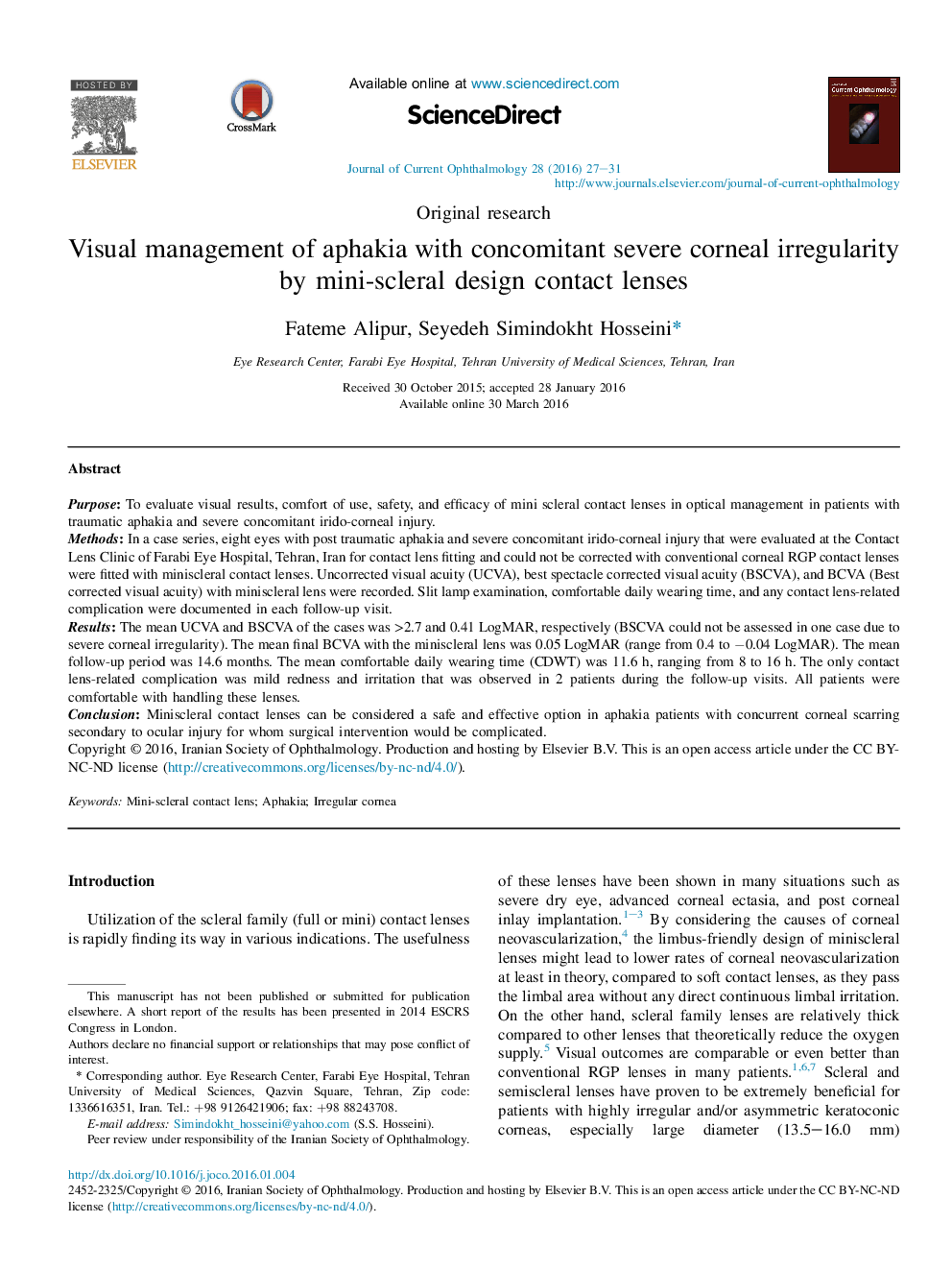| Article ID | Journal | Published Year | Pages | File Type |
|---|---|---|---|---|
| 4022870 | Journal of Current Ophthalmology | 2016 | 5 Pages |
PurposeTo evaluate visual results, comfort of use, safety, and efficacy of mini scleral contact lenses in optical management in patients with traumatic aphakia and severe concomitant irido-corneal injury.MethodsIn a case series, eight eyes with post traumatic aphakia and severe concomitant irido-corneal injury that were evaluated at the Contact Lens Clinic of Farabi Eye Hospital, Tehran, Iran for contact lens fitting and could not be corrected with conventional corneal RGP contact lenses were fitted with miniscleral contact lenses. Uncorrected visual acuity (UCVA), best spectacle corrected visual acuity (BSCVA), and BCVA (Best corrected visual acuity) with miniscleral lens were recorded. Slit lamp examination, comfortable daily wearing time, and any contact lens-related complication were documented in each follow-up visit.ResultsThe mean UCVA and BSCVA of the cases was >2.7 and 0.41 LogMAR, respectively (BSCVA could not be assessed in one case due to severe corneal irregularity). The mean final BCVA with the miniscleral lens was 0.05 LogMAR (range from 0.4 to −0.04 LogMAR). The mean follow-up period was 14.6 months. The mean comfortable daily wearing time (CDWT) was 11.6 h, ranging from 8 to 16 h. The only contact lens-related complication was mild redness and irritation that was observed in 2 patients during the follow-up visits. All patients were comfortable with handling these lenses.ConclusionMiniscleral contact lenses can be considered a safe and effective option in aphakia patients with concurrent corneal scarring secondary to ocular injury for whom surgical intervention would be complicated.
